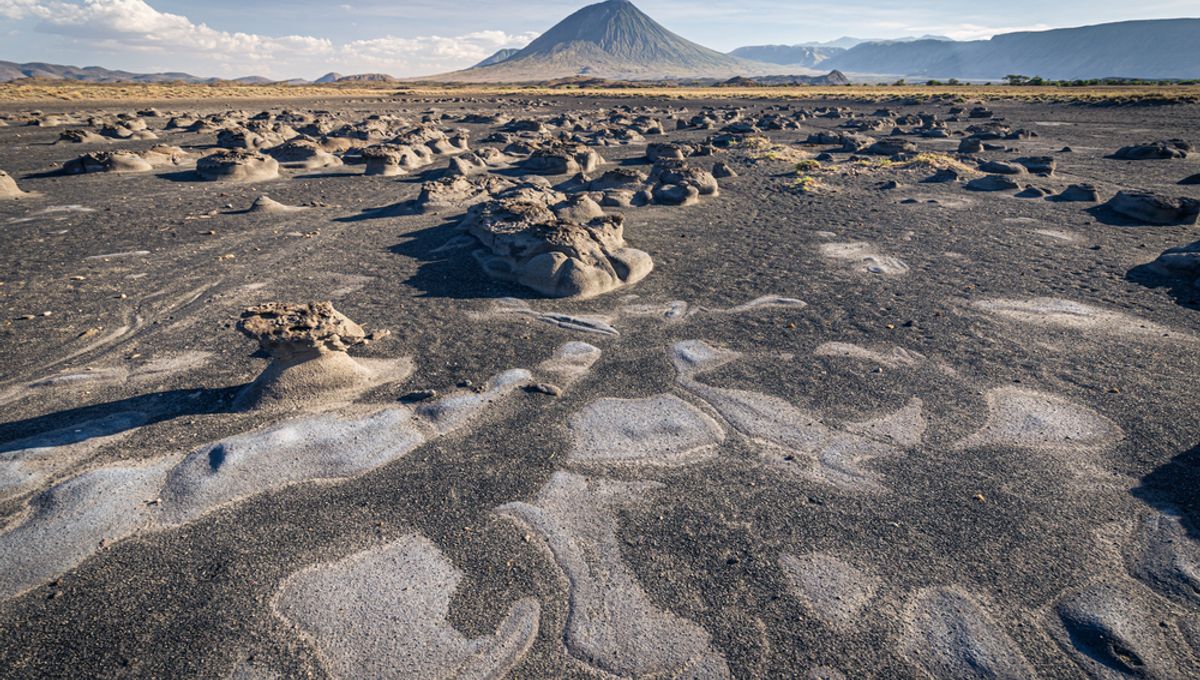
When you think of a volcanic eruption, you probably imagine a glowing red parade of thick lava marching down the slopes of a fiery mountain. Yet that’s not the case at Ol Doinyo Lengai, the only volcano on Earth that spews black, watery lava that behaves in ways that scientists still don’t fully understand.
Located in Tanzania, Ol Doinyo Lengai stands 2,962 meters (9,718 feet) tall and forms part of the East African Rift, where tectonic activity has been ongoing for the past 25 million years. It’s also the only volcano on the planet that erupts carbonate lava, giving it a runny consistency, dark color and incredibly low melting point.
Most volcanoes erupt with silicate lava, meaning they are rich in silica. As a consequence, the magma within these behemoths tends to be thick and gloopy, with a melting temperature of more than 900 degrees Celsius. (1,652 Fahrenheit).
Because of the viscosity of this magma, gas can’t easily escape from deep within a volcano, so when bubbles do form the eruption tends to be explosive and spectacular. Yet Ol Doinyo Lengai’s carbonate lava contains very low amounts of silica, making it far thinner and easier for gas bubbles to pass through.
Theoretically, then, explosive eruptions shouldn’t occur with such magma – which melts at a measly 540 degrees Celsius (1,004 degrees Fahrenheit). Rather than blowing its top, therefore, Ol Doinyo Lengai tends to spew its sloppy black contents like a cooking pot that has been left on too high a heat and allowed to overflow with bubbling water.
Yet in September 2007, the volcano erupted with such force that it blasted itself a brand new 300-meter-wide (985 feet) crater. This remarkable explosion continued all the way into 2008, at which point the volcano resumed its gentler, effusive eruptions.
In the years that followed, research began to suggest that the newly formed crater may even be sinking, and a study published last month has now confirmed that to be the case. Using satellite imagery to document changes in topography around the summit of Ol Doinyo Lengai, the study authors revealed that an area of ground measuring roughly 0.5 kilometers (0.31 miles) in diameter sank by 3.6 centimeters (1.4 inches) a year between 2013 and 2023.
According to the researchers, this striking descent may be caused by “a shallow deflating magma reservoir, less than one kilometer deep below the summit.”
Highlighting the significance of this finding, they go on to explain that summit deformation processes at active volcanoes can lead to “catastrophic collapse”, which is why it’s so important to keep an eye on the strange goings-on in and around Ol Doinyo Lengai.
The study has been published in the journal Geophysical Research Letters.
Source Link: This Volcano Spews Out Black Watery Lava, The Weirdest Magma On Earth